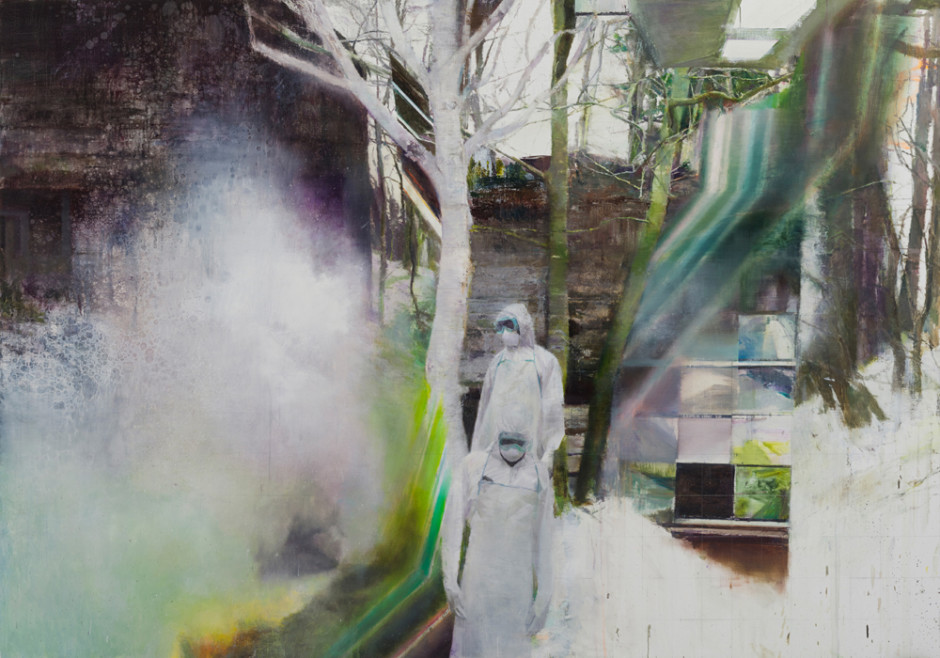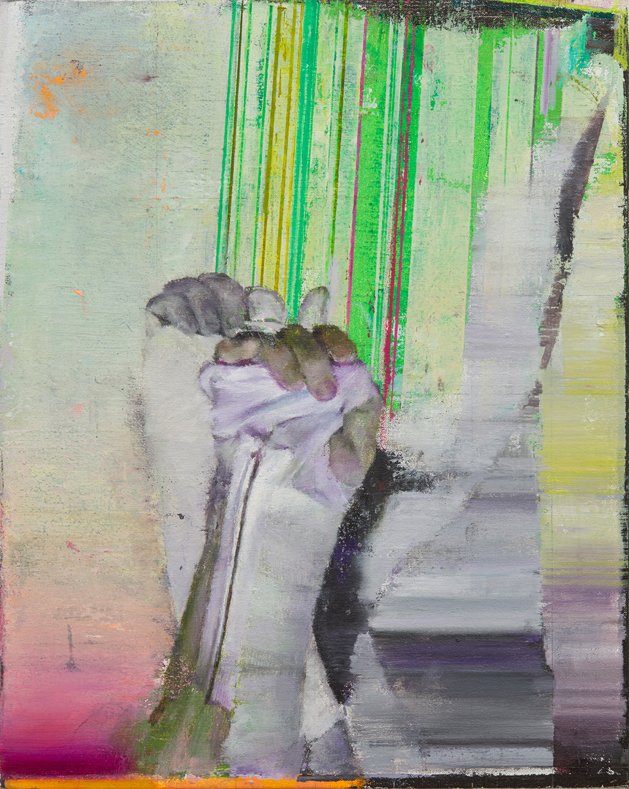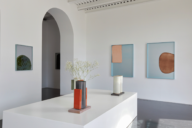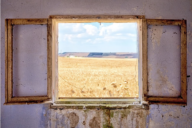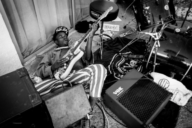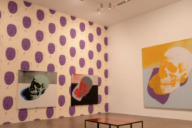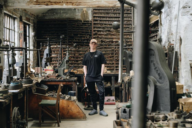Justin Mortimer (b. 1970) is an acclaimed British painter known for his powerful, accomplished and often darkly affecting paintings depicting scenes of human suffering, war, protest and the aftermath of disaster. Things are rarely clear-cut in his complex and disorienting world, however, often presenting scenarios shrouded in ambiguity and asking challenging questions of the viewer in the process. Ahead of his new exhibition, Matt Price met the artist at his studio to see his latest works…
Mortimer’s practice is not for the fainthearted, but in a world in which atrocities, disasters and tragedies are all too prevalent, his paintings offer essential commentary on power and its abuse in a new, globalised, digital, post-truth phase of the nuclear age. I visit Mortimer in his South London studio a few weeks before he opens his second solo exhibition with Mayfair-based gallery Parafin. Entitled ‘It Is Here’, the exhibition features work from a number of overlapping recent and new bodies of painting, following on from his three major solo exhibitions of 2015: ‘Sevastopol’ at Future Perfect, Singapore, ‘Kult’ at Parafin, London, and his first major solo exhibition in a public gallery held at the Djanogly Gallery, Lakeside Arts in Nottingham. It is a cold, wet wintery day and fortunately Mortimer has put his heaters on; unfortunately, the electricity gets cut off shortly into my visit due to some unforeseen maintenance work, so the temperature soon plummets and we stand with our coats on staring at our own breath in the gloom for much of my visit. While Mortimer is keen to point out that he is usually more welcoming to visitors, it seems a strangely fitting way to experience his often large, dark, uncomfortable and bleakly beautiful canvases.
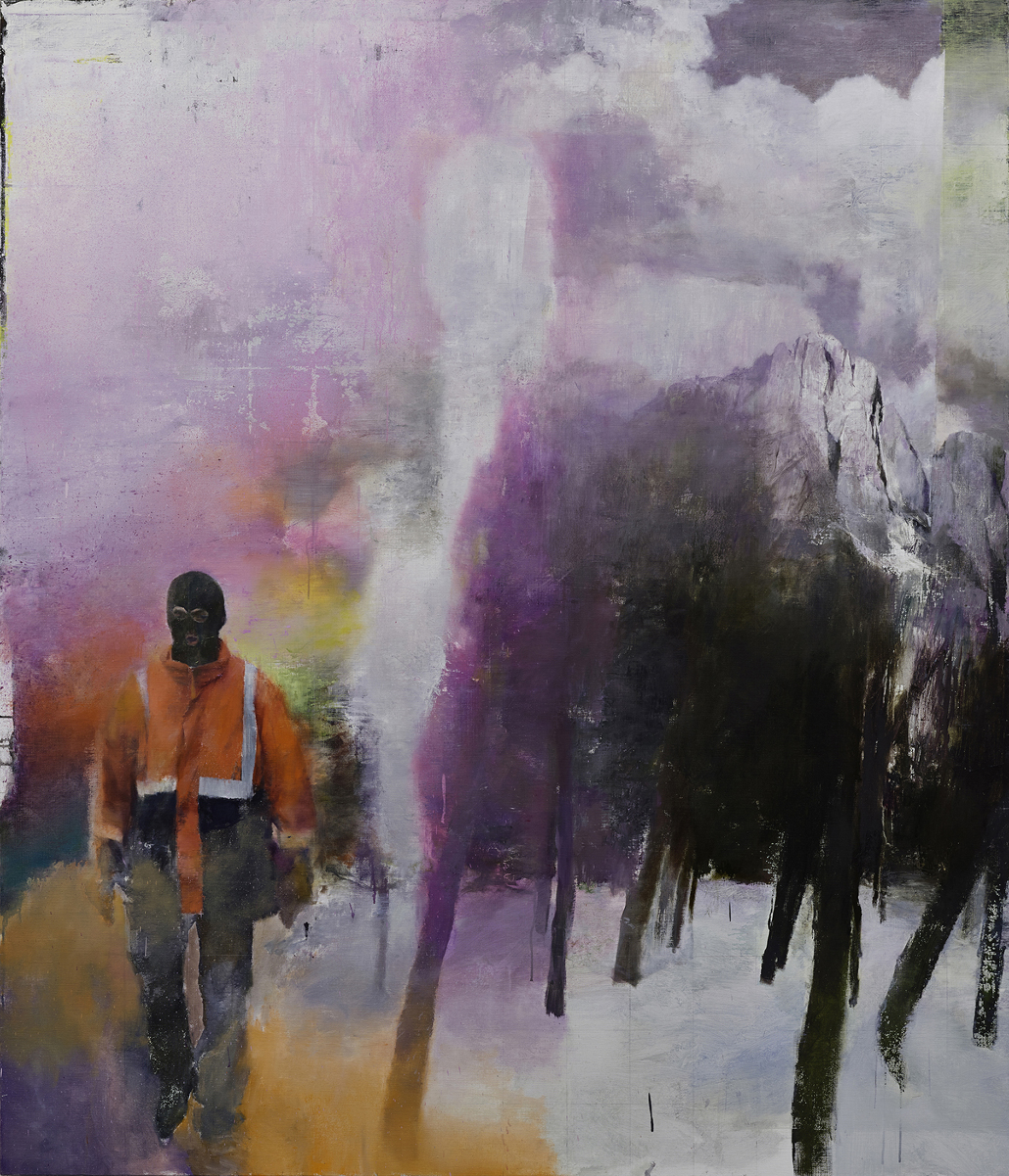
Justin Mortimer. Outland, 2016. Oil and acrylic on canvas. 213 x 184 cm. © the artist; courtesy of Parafin
One key motif among the strands interwoven within his complex practice is the human figure in protective clothing, whether suits for dealing with bio-chemical warfare or face masks for an outbreak of some terrible epidemic disease. Such figures appear in a number of new and recent works such as Outland (2016), in which a figure in a hi-vis jacket, heavy-duty gloves and a balaclava walks towards us through a mountainous, woody landscape enshrouded by almost otherworldly plumes of colourful smoke. We don’t know if the man is in some way responsible for whatever has been set off, or if he is here to help; nor do we know what the risks are from the smoke – are they noxious fumes or simply harmless flares? While much remains unclear, what we can surmise is that whatever’s going on, if someone’s wearing protective clothing in a landscape full of smoke, you will probably want to vacate the area.
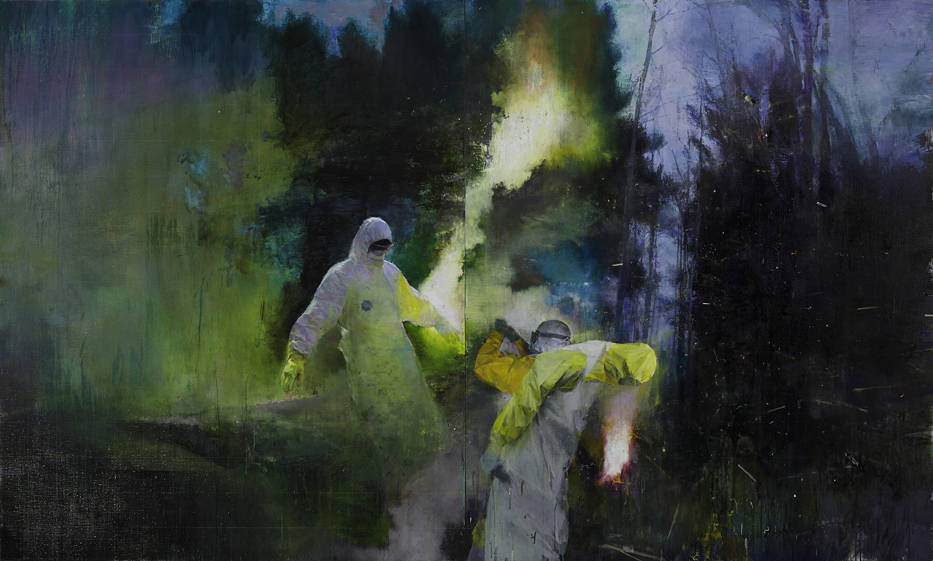
Justin Mortimer. Zona, 2016. Oil on acrylic on canvas. 183 x 305 cm, © the artist; courtesy of Parafin
In the immense and imposing painting Zona (2016) three figures in hazmat suits stand in the middle of a forest, unbalanced to the point of almost falling over in the presence of unspecified dangers. Unnatural, chemical-looking fires increase the feeling that something nasty is in the atmosphere, but the clouds of smoke, tinged with ghostly greens, blues, yellows and pinks against the earthy landscape tones at dusk, create a contradictory sense of something both dangerous yet beautiful – a kind of apocalyptic sublime. While Mortimer is a specialist in blackness, having depicted numerous memorable dark paintings over the years, in more recent works his use of unexpectedly bright colours in innovative ways has opened up not just a remarkable new range of palettes in his oeuvre, but enabled new ways for the artist to convey abject fear, terror and resignation in the face of catastrophe.
This painting, Zona, was the only painted work to be featured in another solo exhibition of Mortimer’s work (staged in January this year) at The Factory in Elephant and Castle, in partnership with London Southbank University. Entitled While the Worst, this exhibition was the first to present a substantial selection of the collages and maquettes that Mortimer uses in the development of his paintings (he sometimes makes up to forty collages for one painting), and which have become a significant body of work in their own right. The figures in Zona, like many motifs in his works, are collaged in from a different source to the landscape into which they are dropped, yet they read almost as real figures in a real space, with something uncanny unsettling and undermining our belief in the veracity of this dramatic and forebodingly picturesque scene. The event has either been doctored, or invented entirely.
Another major theme to which Mortimer returns in his latest work is that of the makeshift campsite. It is never clear whether the places he depicts are sites for refugees or for protesters, and Mortimer creates this hybrid ambiguity with results that are both startling and disconcerting. With more than a passing nod to revellers and ravers of the early 90s, the so-called ‘acid-house generation’, along with protest groups – especially Feminist groups such as Pussy Riot and Femen – Mortimer uses the human body and the nude as metaphors for an existential crisis point in the human condition. Mortimer’s campsite and woodland scenarios capture people in places and situations where they have seemingly reached states of degradation and desperation through oppression, war, violence, genocide, sexual abuse or enforced exile, their bodies displaced and decontextualized in often unknown and hostile new physical environments. These people’s minds, bodies, families, lives, homes, possessions, land and communities might have been uprooted or destroyed, leaving them in limbo, in temporary though potentially long-term states of emergency. And if they’re lucky, they might get some aid or medical attention in the short term.
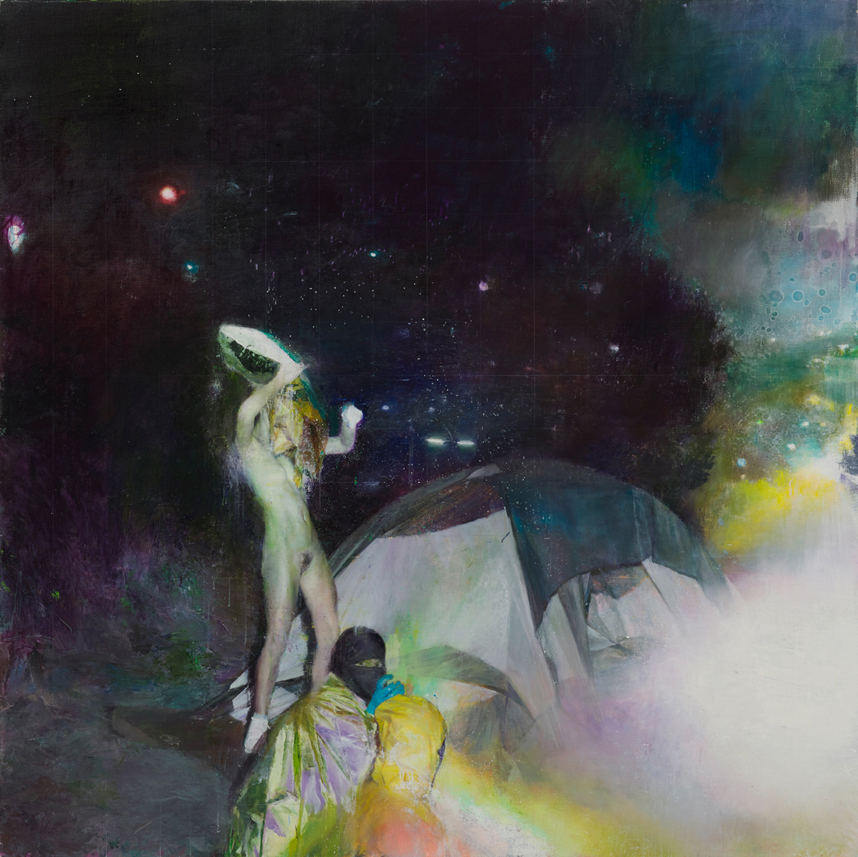
Justin Mortimer. It Is Here, 2016. Oil and acrylic on canvas. 214 x 214 cm. © the artist; courtesy of Parafin
In the major new work It Is Here (2016), Mortimer fuses some of these many ideas and themes into an astonishing image depicting a naked woman in a seemingly troubled mental state standing outside a tent in the darkness, with a masked or veiled figure crouching in the foreground covered in an emergency foil blanket. Suggestive of the moment of no longer being able to cope when faced with physically challenging conditions, hopelessness and despair, this unforgettable painting serves as a terrifying metonym of the lows to which humanity can sink and the barbarism that constantly undermines human civilization. It might be dark, it might be sub-zero, you might be starving, you might have been raped, there might be dangers all around. The blow-out of light in the bottom right-hand corner is like the flash of a journalist’s camera as we stare at this pitiable scene. It could be Aleppo, it could be The Jungle in Calais, it could be anywhere, but in many respects it’s not about something happening far away, or in the past, or to other people, because for Mortimer, it is among and around us all – it is here.
The role of the camera lens in the forming of public opinion is a significant aspect of Mortimer’s conception and development of his paintings. As already mentioned, the artist often starts his works through a lengthy process of digital collaging of eclectic source materials from newspapers, magazines, books and, increasingly, the Internet and social media, and as the digital technology has been progressing, Mortimer has become increasingly interested in the significance of digital imagery and the virtual for our understanding of what is going on in the world. Now, around a quarter of a century since the dawn of the Internet, we are increasingly living with the outcomes of digitization in our image-saturated world. Mortimer’s wastelands are infused with – often made up of – digital imagery, and the representation of the two realms, physical and digital, are now sometimes almost indistinguishable, posing us new questions about perception and interpretation of images and information. We have long known that we can’t always trust images and we can’t always trust the people who use them, but today we can’t avoid being constantly aware of this dark quicksand of image and information, opinion and propaganda, truth and lies.

Justin Mortimer. Kult x, 2016. Oil and acrylic on panel. 56 x 38 cm. © the artist; courtesy of Parafin
This convergence of the real and virtual worlds in Mortimer’s practice, played out to some extent through documentary and collage, can also be discerned in the interplay of abstraction and realist figuration contained within many works, whether by means of smoke, light and atmospheric effects through space, or through other formal and graphic devices serving as interventions within a given image, which can range from the discreet to the surreal. The most recent evolution of this within Mortimer’s practice takes the form of abstract lines and stripes, sometimes lying across the picture plane, sometimes interjecting within the illusory space of the image. These lines, it could be argued, partly began as purely abstract motifs in the backgrounds of his smaller works – particularly developed through his exquisitely painted ongoing series – Kult – of macabre still lifes of injured hands, wrists and arms, and have grown in prominence and significance, coming to represent a combination of things including neon lights, LEDs, lasers and the digital world of today’s electronic technology.
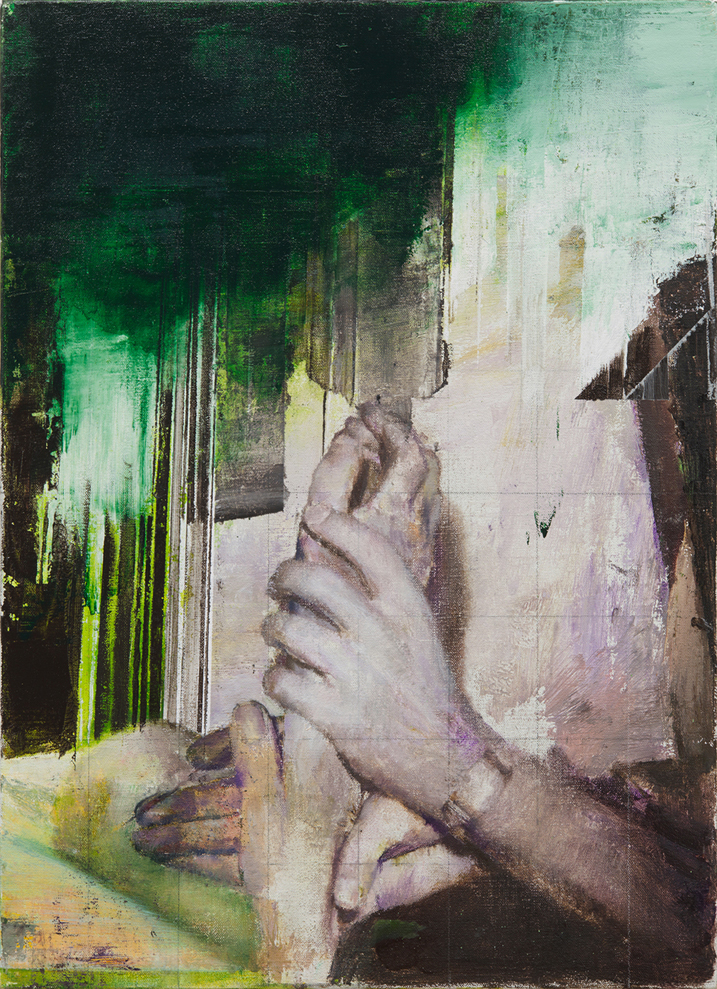
Justin Mortimer. Kult viii, 2016. Oil and acrylic on canvas. 56 x 41 cm. © the artist; courtesy of Parafin
Military and medical tests, experiments, examinations and trials are another recurring theme in Mortimer’s oeuvre, and in the Kult series the jagged abstractions and neon-coloured striations are suggestive of the broken bones, fractures, pulled tendons, exposed nerves and torn muscles they enshroud, simultaneously implying dyes, drips or drugs pumped through veins as well as stains on ripped clothes, bandages, splints or plaster casts. They are also evocative of the piercing lights of equipment used to assess or with which to operate on patients and test subjects, and of the electronic waveforms on hospital monitors and machinery. The source images for many of these stripes are actually smashed television and computer screens, bringing broken signals, distorted waves and corrupted data into his ever-expanding painterly vocabulary.
On a broader level, these latest pictorial devices serve to symbolize a shattering or rupturing of reality, a splintering of the fabric of the image and its representation of three-dimensional space. It is, perhaps, a painterly exploration of the breakdown of the material world, the deterioration of common values and the erosion of basic human rights in an era of digital communication. Maybe there’s more horror, abuse and subjugation today, or maybe we’re just seeing more of it. Mortimer’s practice has long been working to expose, understand and capture the mechanisms of power that result in atrocities and suffering in their myriad forms in the world today – a complex interplay of patriarchy, financial greed, geo-politics, corporate ruthlessness, control of resources and industry, control of the media, control of technology, military might and sheer hatred. Now, as the Western world seemingly moves to the right of the political spectrum, and extremists work increasingly to destabilize the West while refugees flood in escaping war, genocide and oppression, Mortimer’s work is perhaps more relevant and pressing than ever.
On a very simple level, how do we come to terms with the amount of suffering inflicted on our fellow humans, and how do we confront abhorrent human traits such as greed, selfishness, abuse and hatred? Mortimer’s oeuvre shows this profound and existential battle taking place within humankind – but in Mortimer’s world it is a battle in which the oppressors and the oppressed are not always clearly defined, where images and information are not what they seem, and where there are more questions than answers. While not without hope, his is not an optimistic position, needless to say. Asked his thoughts on the concept of a ‘post-truth’ world, Mortimer replies: ‘Appalled, disgusted, powerless. Rage, rage, hatred, rage. Impotent rage’.
Justin Mortimer: It Is Here is on show at Parafin, London, from 30 March to 20 May 2017.

